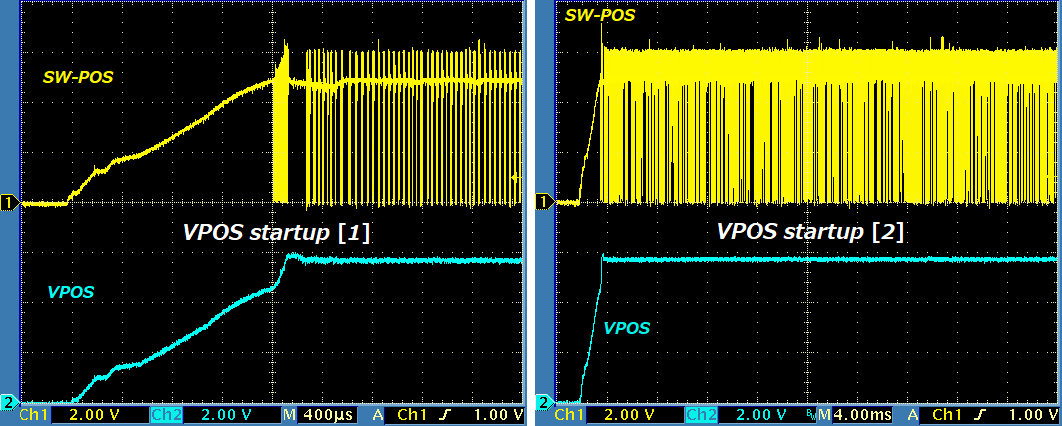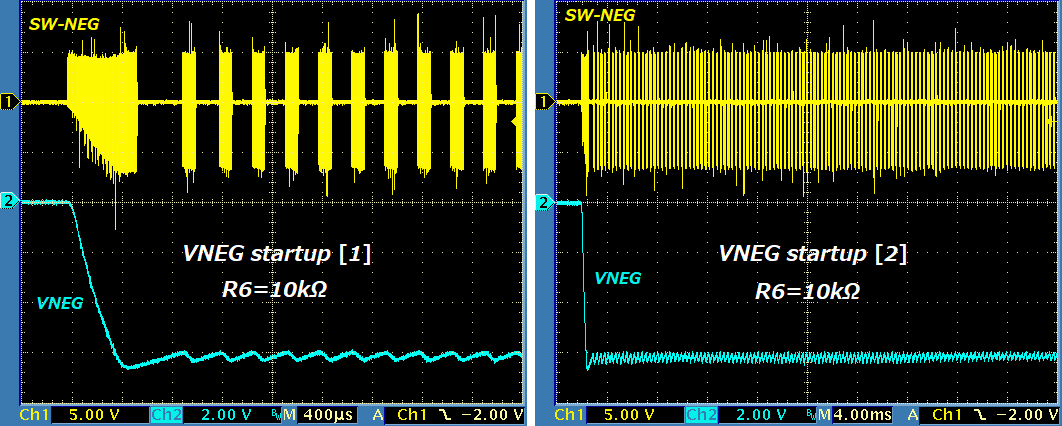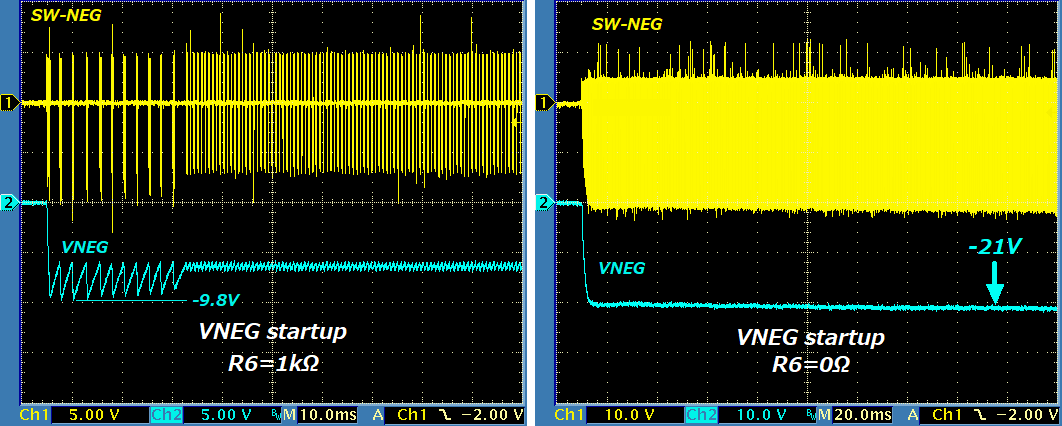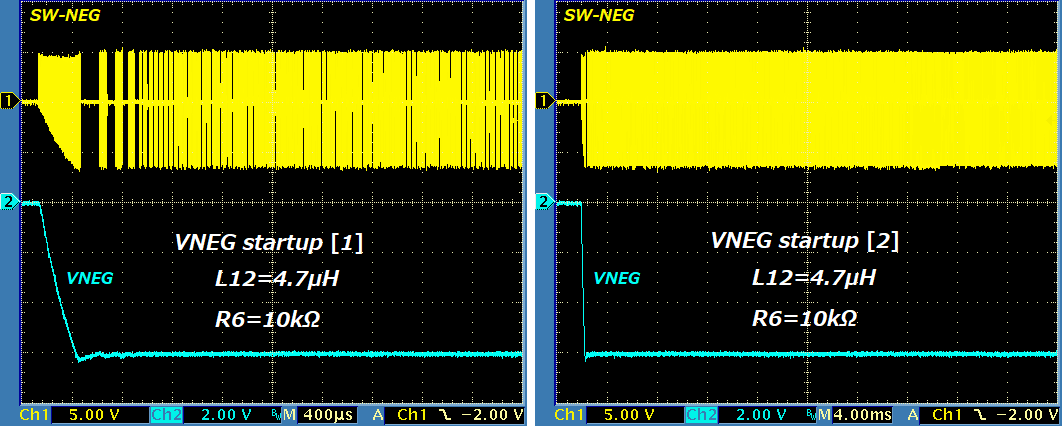Other Parts Discussed in Thread: OPA1679
In <e2e.ti.com/.../692786 Brigitte wrote:
> Yes, with the next datasheet update we should include this.
So, how do we calculate the best value for R6? In addition, although you and the datasheet say `noise decoupling', isn't the most important subject there to compensate the closed loop response with those components? Moreover, I doubt that there might be no appropriate values of C9 and R6 because:
Here are the schematic and the PCB layout extracted from our recent product. The best R6 value that makes this block give a good stability is infinity, i.e., open.
The loads, mainly three OPA1679 s, consume approx. +/-25mA from the +/-5V output. Because of such light loads, we use a largish inductance for the inductors in order to reduce(POS) or to avoid(NEG) the pulse-skipping (in other words, to reduce the output ripples).
The following picture shows how the VNEG output starts. Note that the output gets settled approx. 27ms after the start.
However, if R6=10k-ohm, the output does never seem to be settled as follows:
I believe the cause of the oscillation is the unstable closed loop, not the pulse-skipping (being due to the light load). Furthermore, the smaller value for R6 increases the unstableness as follows.
On the other hand, the VPOS output is good enough. The pulse-skipping occurs as expected but it does not cause the output ripple.
Thanks.







